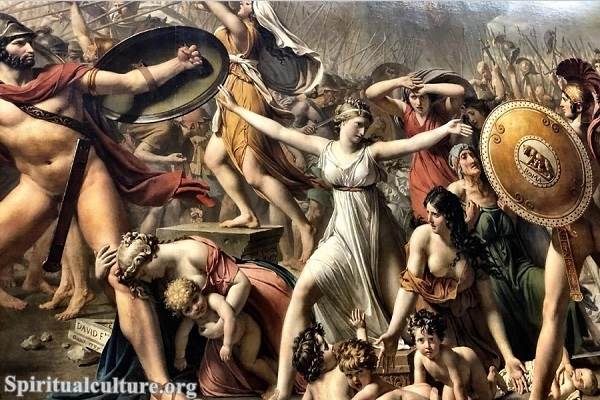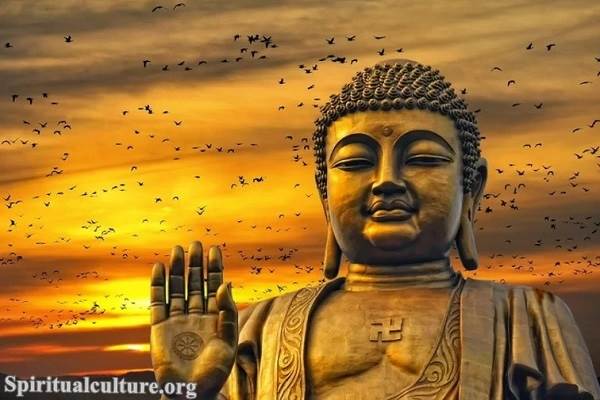Across history and culture, humanity has looked beyond the veil of death and asked: Is there something more?
The mystery of the afterlife is one of the most enduring spiritual questions. Whether it’s paradise, rebirth, union with the divine, or eternal silence, nearly every religion offers a vision of what may lie beyond this life.
In this article, Spiritual Culture invites you to explore the deeply rooted and diverse beliefs about the afterlife found across the world’s major religions. We’ll examine not just what these traditions teach, but why they hold these views — and how they shape the way believers live, love, grieve, and hope.
✨ Why the Afterlife Matters
The question of the afterlife touches something primal and personal. It’s about more than what happens when we die — it’s about how we live, and what gives life meaning.
To believe in an afterlife is to believe that this life is not the end. That suffering has a purpose. That justice will be fulfilled. That love endures.
But not all religions answer this question in the same way. Some envision a soul that journeys onward, others see death as the return to a cosmic cycle, and a few see liberation as the end of the self entirely.
Let’s explore these perspectives, one tradition at a time.
✝️ Christianity: Eternal Life with God
Salvation, Judgment, and Resurrection
Most branches of Christianity believe in a personal afterlife — a soul that continues beyond death, with final destinations often described as heaven or hell. The New Testament offers rich imagery of both hope and warning:
“And this is the testimony: God has given us eternal life, and this life is in his Son.” — 1 John 5:11
The Christian view of the afterlife centers on:
- Resurrection of the body
- Judgment before God
- Heaven as union with God
- Hell as separation from God
Variations Among Denominations
While Protestants emphasize faith in Christ as the key to salvation, Catholics include purgatory as a temporary state of purification. Eastern Orthodox Christians speak of the afterlife as an unfolding experience of divine light or darkness, depending on one’s spiritual condition.
🕊️ Islam: Paradise and the Day of Judgment
A Life of Accountability
Islam teaches that life is a test, and that the soul survives death to face divine judgment. The Qur’an vividly describes both Jannah (Paradise) and Jahannam (Hell).
“Every soul will taste death. Then to Us will you be returned.” — Qur’an 29:57
The afterlife in Islam is deeply moral — tied to one’s deeds, intentions, and faith in God (Allah). Believers are taught to prepare for the Akhirah (the Hereafter) by living righteously, giving charity, praying, and seeking forgiveness.
🕉️ Hinduism: Rebirth and Liberation
Samsara and Moksha
Hinduism does not see death as an end, but as a transition in a cosmic cycle. The soul (Atman) is reborn repeatedly through samsara (the cycle of birth and death), until it achieves moksha — liberation from the cycle and union with the divine.
“Just as a man casts off worn-out garments and puts on new ones, so the soul casts off the worn-out body and enters others which are new.” — Bhagavad Gita 2:22
Karma determines one’s future births, and spiritual practice — yoga, devotion, knowledge — leads toward freedom from rebirth.
☸️ Buddhism: No-Self and Nirvana
Rebirth Without a Soul?
Unlike Hinduism, Buddhism denies the existence of a permanent soul (Atman). Yet, it teaches that our actions (karma) create a stream of continuity, which leads to rebirth.
The ultimate goal is not to go to heaven, but to attain Nirvana — the cessation of suffering and the end of rebirth. This is liberation from the illusions of self, craving, and attachment.
“Just as a flame is blown out by the wind and ceases to exist, so too is the cessation of all craving called Nirvana.” — Dhammapada
Theravāda Buddhists see Nirvana as a transcendence of all existence, while Mahāyāna Buddhists also emphasize Bodhisattvas — enlightened beings who delay Nirvana to help others.
✡️ Judaism: From Sheol to the World to Come
A Diversity of Views
Ancient Judaism spoke of Sheol — a shadowy realm of the dead. Later Jewish thought developed varied understandings of the afterlife, including:
- Olam HaBa (the World to Come)
- Resurrection of the Dead
- Gan Eden (the Garden of Eden — paradise)
- Gehinnom (a purgative realm, not eternal hell)
The Talmud and Kabbalistic teachings offer spiritual, symbolic views of life after death. Some modern Jews focus less on the afterlife and more on living ethically now.
🕎 Indigenous and Tribal Religions: Ancestors and the Spirit World
Cycles, Presence, and Continuity
Many indigenous belief systems view death not as an end, but as a transition into another realm — where ancestors watch over the living, nature spirits dwell, and the dead remain active in the spiritual ecosystem.
From Native American traditions to African cosmologies and Aboriginal beliefs, the afterlife is interwoven with the natural world, not separate from it.
The dead are not gone; they walk with us, speak through dreams, and live in memory and ritual.
✝️ Eastern Orthodoxy, Revisited: The Afterlife as Divine Encounter
Orthodox Christianity places great emphasis on theosis — becoming united with God. The afterlife is less about geography (heaven/hell) and more about our experience of God’s presence.
Heaven and hell are not places, but responses to the same divine light. For the pure, it is joy. For the unrepentant, it burns.
🪔 Jainism: Liberation through Non-Attachment
Jainism shares with Hinduism the idea of rebirth and liberation (moksha), but with an even stricter ethic of non-violence (ahimsa). Every soul is eternal and accountable.
Salvation comes through self-discipline, truth, and complete detachment from worldly ties. Once liberated, the soul rises to the top of the universe, free forever.
☯️ Taoism: Harmony with the Tao
Taoism does not focus heavily on the afterlife in a conventional sense. Instead, it emphasizes living in harmony with the Tao — the Way of nature.
After death, one returns to the Tao, like a drop of water returning to the sea. Some folk Taoist traditions do include immortals, spirits, or heavenly realms, but these are symbolic of the mystery rather than doctrine.
🛐 Atheism, Agnosticism, and Non-Religious Views
While not religious in the traditional sense, many modern people hold beliefs about life after death:
- Some see consciousness as ending at death
- Others believe in reincarnation or energy returning to the universe
- Near-death experiences, legacy thinking, and ancestral memory shape non-theistic views of continuity
Even in secular thought, the longing for meaning beyond mortality remains.
🌍 Common Threads in Afterlife Beliefs
Despite wide variation, most religious systems affirm:
- Death is not the end
- Moral action matters
- There is continuity or transformation
- Spiritual discipline shapes one’s destiny
Whether by judgment, reincarnation, liberation, or remembrance, afterlife beliefs reflect a shared human intuition: there is more to us than flesh and time.
🧭 Reflect and Reimagine
So, do all religions believe in an afterlife?
Not all in the same way — but nearly all believe that this life is not all there is.
Some look toward paradise, others toward liberation, and still others toward mystery, memory, or harmony. But across the world, religion helps us reckon with mortality — and imagine what might lie beyond.
As Spiritual Culture, we invite you to:
- Reflect on your own beliefs about life and death
- Learn from the sacred stories of other faiths
- Live with the awareness that how we live shapes what comes after
What we believe about death reveals what we most cherish in life.
And perhaps, that is where the afterlife truly begins.


